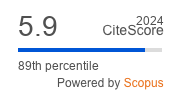Article | Open Access
Mapping Government Use of Social Media Influencers for Policy Promotion
| Views: | 1766 | | | Downloads: | 2178 |
Abstract: This study explores how national governments leverage social media through influencer partnerships and digital campaigns to promote cultural values and policy goals. Covering a broad spectrum of governmental bodies (e.g., ministries and officials), the research highlights the variety of influencer–government partnerships and collaborations. The study comes at a time when diverse regulatory frameworks are emerging globally to govern influencers’ activity, mandating transparency in sponsorships, protecting consumer interests, and setting boundaries on influencer involvement in governmental and political campaigns. The methodology combines two main steps: (a) a web search of news articles and blogs to identify relevant examples of government–influencer collaborations; (b) a manual annotation of government-led influencer strategies of the retrieved examples based on thematic areas, degree of autonomy in the partnership, and narrative strategy. The study focuses on France, the US, and Canada, chosen for their advanced digital environments and initiative-taking approaches in both social media regulation and public diplomacy. The main contribution of the study is to develop a typology of government–influencer collaborations to align public perception with (inter)national policy goals and reach their target audiences.
Keywords: influencers; engagement; government communication; government–influencer relations; political public relations; social media
Published:
© Maud Reveilhac. This is an open access article distributed under the terms of the Creative Commons Attribution 4.0 license (http://creativecommons.org/licenses/by/4.0), which permits any use, distribution, and reproduction of the work without further permission provided the original author(s) and source are credited.


